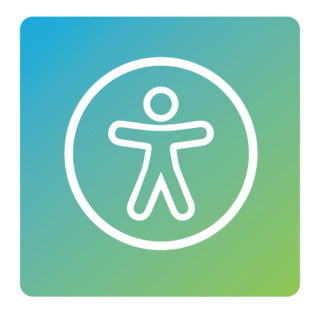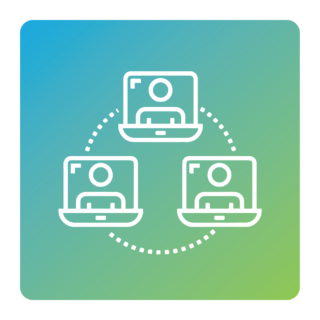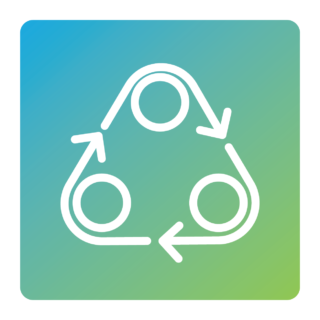UX Design Trends
A Look in the Rear-View Mirror to See What’s Ahead in 2022
At the end of every year, numerous articles and blogs are written predicting the UX and design trends for the upcoming year. To close out 2021, we reviewed many of these stories to see which trends actually panned out. From our vantage point, there are three trends that took hold this year and will continue to be a focal point in 2022 and beyond: digital inclusion and accessibility, remote collaboration, and DesignOps.
These trends are not new. What is new, however, is the context in which we have found ourselves—amid a global coronavirus pandemic that has forced us to change our “normal” way of life and become accustomed to a new remote and digital lifestyle (even among those who do not consider themselves to be tech-savvy). The rise of Omicron, the threat of future variants, and the lack of COVID vaccine uptake globally will only cause those trends to continue in the New Year.
Remote working, shopping, banking—you name it—remote everything will continue to be a preferred choice for many people into the future. This reality provides new opportunities for UX and Design, which have in the past sometimes seemed an afterthought for companies. Forced to prioritize digital, companies have woken up to the reality that they are on the hook to create customer experiences that fit with this increasingly remote and digital lifestyle.
It’s now widely accepted that UX design is a key component of business success. As more interactions and transactions take place online, it’s more critical than ever for companies to integrate human-centered design, building trust and delivering value in a consistent and reliable way that will encourage customers to keep returning.
Digital accessibility is more than a best practice – it’s a social responsibility and the law
The web and mobile apps are an increasingly essential part of everyday life, and everyone deserves to use them equally. Digital accessibility ensures that a wide range of users can easily understand and navigate a website or mobile application, including users with visual, auditory, motor, or cognitive disabilities.
From a user experience and technology perspective, addressing accessibility within digital products and experiences has become both a best practice and a social responsibility. Beyond that, for many of our clients addressing online accessibility is also the law. \
The World Wide Web Consortium, the main governing body of the internet, has created the Web Content Accessibility Guidelines (WCAG) to ensure that digital content is accessible to everyone. All federal contractors are legally required to meet these standards in their online design. In addition, private companies are bound by the Americans with Disabilities Act (ADA) to provide access to people with disabilities, and following WCAG is the clearest way to do so. (For more details on how to design for accessibility, check out our two-part blog series.)


Remote collaboration requires communication and tools to manage cross-functional software design and development teams
While a human-centered design culture can dramatically accelerate organizational success, creating that culture is not easy. Communication is key to collaboration, especially when working remotely. And there are many challenges communicating in a hybrid workplace beyond making Zoom meetings more productive. Communication requires a common language for everyone in the company – including business, design, and technology — to understand the meaning of the terminology being used.
Establishing a common language removes barriers and breaks down silos, transforming inter-company relationships and laying a foundation for the culture of a Design-Integrated business. By using the same terminology, cross-functional teams find common ground in the language used and can build trust and understanding with each other, reducing the potential for miscommunication around product development. Better still, it enables a higher degree of integration between functional teams with shared artifacts, processes, and systems.
Another important element to remote collaboration is the tools we use to manage cross-functional software design and development teams. COVID forced us to stress-test the tools. We’ve learned that some tools have been successful, but there is plenty of room for opportunities to gain efficiency and quality. This ties in with the third trend…DesignOps.
DesignOps is key to building digital product design teams now and moving forward
Design Operations is the key to scaling digital product design teams with more efficiency. As companies mature and invest in design, they need to operationalize workflow, hiring, alignment between teams, and more so designers can focus on design work while someone else takes care of the rest.
For all the advancement a career in DesignOps management has opened up, there’s still much room for improvement. Cross-functional workflows still heavily rely on meetings and manual processes to relay information between insights, concepts, designs, and implementations. The tools we use don’t account for passing shared information or “business/design/system object” models seamlessly in contextually relevant ways.
For more insights on what teams need to do to better facilitate cross-functional collaboration, check on Jon Fukuda’s LinkedIn article “What’s Still Missing from DesignOps?” You can also download the de-facto study on the Design Operations field, “The State of DesignOps 2021 report.” With data from over 200 companies worldwide, Angelos Arnis provides foresight on how professionals are transforming organizations.
If DesignOps is a new to you, it’s also worth taking some time to read this excellent primer by Peter Weibrecht on how organizations should be thinking about standing up Design Operations. It’s a condensed walkthrough of InVision and Dave Malouf’s DesignOps Handbook.


Designing for the Future
As companies fiercely compete to innovate and enhance the customer experience, UX design is now more important than ever. Elements such as color, graphics, and font play an important role in digital product experience, but they are only part of the equation. Business leaders must increasingly focus on the deeper elements of a human-centered design culture in order to meet – and exceed – customers expectations.
Over the past year, 2021 has already seen increasing investments in digital accessibility to ensure access to all; greater communication to facilitate remote collaboration; and DigitalOps to efficiently scale user-centered design capacity. These trends will surely continue to grow and develop in 2022 to ensure a winning strategy in a competitive digital environment.